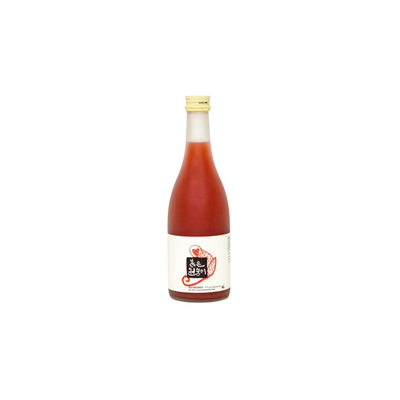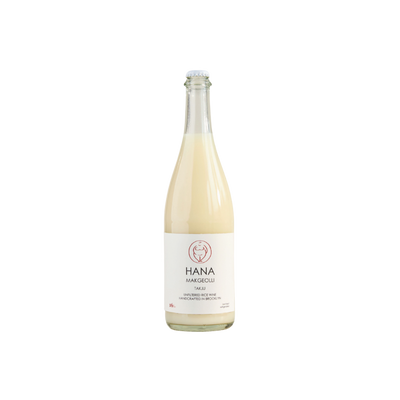Unflavored Makgeolli
What is Unflavored Makgeolli?
Unflavored Makgeolli represents the traditional, pure form of Korea's beloved rice wine, made simply from rice, nuruk (fermentation starter), and water without any added fruits, herbs, or artificial flavoring agents. This milky, slightly effervescent alcoholic beverage showcases the natural sweetness and tang that comes from the fermentation process itself, offering a clean, authentic taste profile that ranges from mildly sweet to pleasantly tart. What defines unflavored makgeolli is its commitment to the original recipe and brewing methods, allowing drinkers to appreciate the subtle complexities that develop naturally during fermentation.
Learn More About Unflavored Makgeolli
What makes Unflavored Makgeolli unique?
Unflavored makgeolli stands as the purest expression of this ancient Korean rice wine, showcasing the natural sweetness and subtle funk that comes from traditional fermentation without any added fruits, herbs, or spices. Unlike its flavored cousins that might feature ingredients like chestnut, ginger, or various fruits, unflavored versions let you taste the true character of the rice itself and the wild yeasts that create makgeolli's signature cloudy appearance and gentle effervescence. This stripped-down approach reveals the craft of the brewer most clearly, offering a creamy, slightly tart base that pairs beautifully with Korean cuisine while delivering that authentic farmhouse character that made makgeolli Korea's most beloved traditional alcoholic beverage.
How is Unflavored Makgeolli made?
Unflavored makgeolli starts with steamed short-grain rice that's mixed with nuruk, a traditional Korean fermentation starter containing wild yeasts and bacteria. The rice and nuruk ferment together for several weeks in large clay or stainless steel vessels, creating a milky, slightly effervescent alcoholic beverage. After fermentation, the liquid is typically strained to remove solids, though some producers leave it unfiltered for a cloudier, more rustic character.
How do you drink Unflavored Makgeolli?
Unflavored makgeolli is traditionally enjoyed neat and slightly chilled, served in small bowls or cups rather than shot glasses, making it perfect for leisurely sipping alongside Korean barbecue or spicy dishes. While purists prefer it straight to appreciate its creamy, slightly fizzy texture and tangy-sweet flavor profile, bartenders have started incorporating it into light, refreshing cocktails that complement its natural acidity—think fizzes, sours, and fruit-forward mixed drinks that don't overpower its delicate rice wine character. This versatile Korean rice wine shines brightest during spring and summer gatherings, casual dinners with friends, or any time you want something lighter than beer but more interesting than wine.
How do I choose good Unflavored Makgeolli?
Look for makgeolli with visible sediment at the bottom – that cloudy, milky appearance signals live cultures and authentic production methods rather than overly filtered commercial versions. Fresh is best, so check production dates and buy from stores with good turnover, as this rice wine continues fermenting and developing flavors over time. If you're planning to use it in cocktails, opt for slightly sweeter varieties that will balance citrus and spirits, while drier styles work better for sipping straight or pairing with Korean barbecue.
Nutritional Information
Typical Calorie Range per Ounce: 12-18 calories
Typical Carbohydrate Range per Ounce: 1.5-3 grams
Typical Sugar Range per Ounce: 0.5-2 grams
Typically Gluten Free: No
Traditional makgeolli is made from rice and wheat, making it unsuitable for those avoiding gluten. Some modern producers create rice-only versions that may be gluten-free, but you'll want to check the specific product label and manufacturing details to confirm gluten-free status before purchasing.
Scrolled this far? Your reward? Unflavored Makgeolli Trivia!
- Makgeolli contains live probiotics that actually continue fermenting in the bottle, which means this Korean rice wine gets slightly more alcoholic and develops new flavors as it sits in your fridge - making each sip from the same bottle a slightly different experience over time.
- The milky, cloudy appearance comes from rice sediment that's intentionally left in the drink, and traditional Korean etiquette demands you gently swirl the bottle before pouring to redistribute these particles - never shake it like you would a cocktail mixer, as this destroys the delicate texture.
- Makgeolli was originally considered peasant food because it was made from broken rice grains that couldn't be sold as premium white rice, but this "inferior" ingredient actually creates more complex flavors than whole grains would, making the cheapest ingredient the secret to the best taste.
- During Japanese colonial rule in Korea (1910-1945), makgeolli production was heavily restricted and nearly died out completely, but it survived because Korean grandmothers kept making it secretly in their homes using hidden ceramic pots buried in backyards.
- Fresh makgeolli has a naturally occurring alcohol content that can range from 6-18% depending on fermentation time, but most commercial versions are diluted down to 6-9% - meaning traditional homemade versions pack nearly three times the punch of what you'll find in stores.
Higher-proof spirits can be intense. Mix carefully, taste thoughtfully, and enjoy responsibly.
Gift message (optional)



